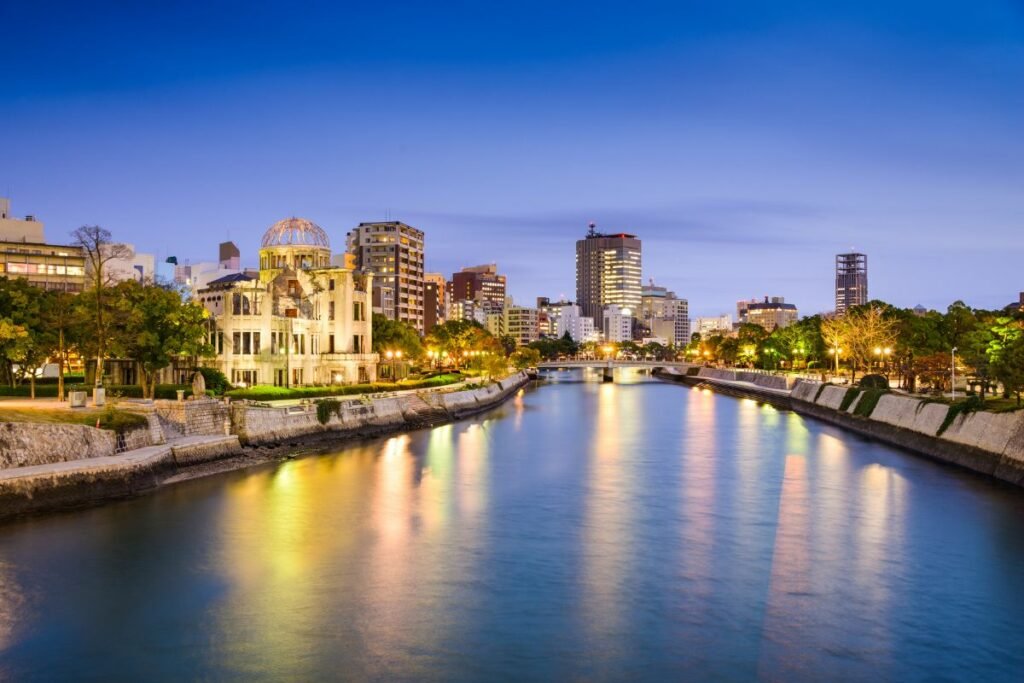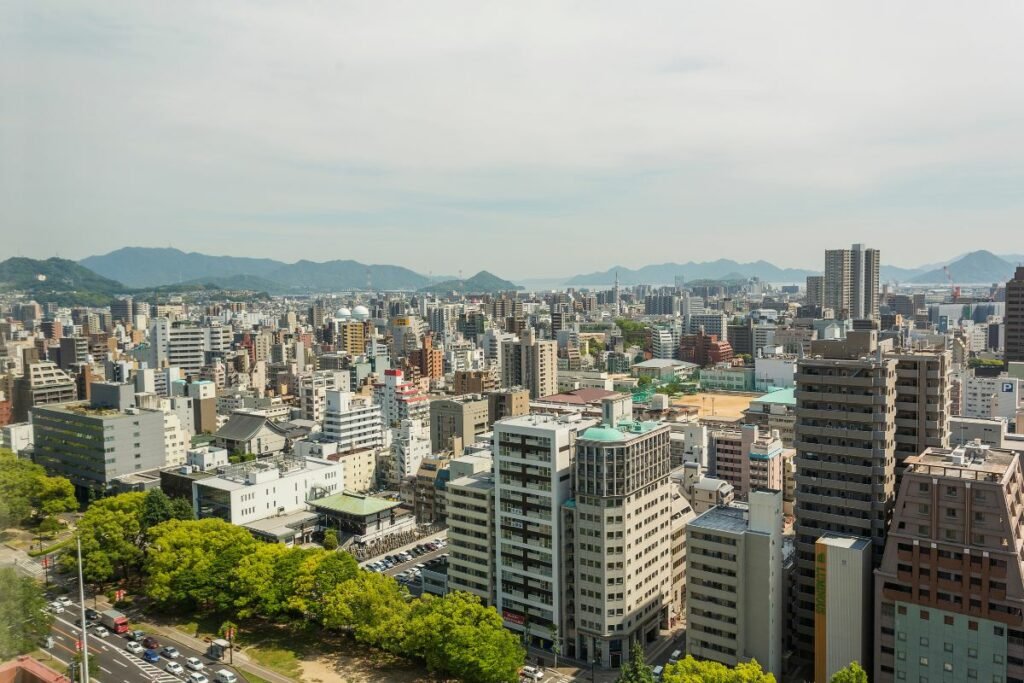Many people wonder if the population of Hiroshima is still thriving after the nuclear attack during World War II.
Little Boy and Fat Man, two nuclear bombs, were dropped by American airmen on Hiroshima and Nagasaki in Japan on August 6th and 9th, 1945.

Similarly, on April 26th 1986, the Chernobyl Nuclear Plant in Ukraine had a nuclear disaster when the number four reactor exploded.
Although Hiroshima and Nagasaki now have over 1.6 million residents and appear to be prospering, the Chernobyl radiation zone, a 30 square kilometre region surrounding the plant, is still largely unoccupied. So why do people still live in Hiroshima?
This article will cover why the residents of Hiroshima are still there, and how they have managed to prosper in a previous nuclear disaster zone.
The Atomic Bombs Dropped On Hiroshima
Little Boy was a uranium-fueled bomb that was dropped on Hiroshima on August 6th, 1945. It was roughly 10 feet long, slightly over two feet wide, contained 140 lbs of uranium, and weighed close to 10,000 pounds.
Approximately two lbs of uranium experienced nuclear fission when it exploded as intended nearly 2000 ft above Hiroshima, releasing approximately 16 kilotons of explosive force. Little Boy did a lot of damage since Hiroshima was situated on a plain.
Various estimates suggest that on that day, 70,000 people were killed, an equivalent number were injured, and roughly 70% of the city’s structures were destroyed.
Since then, it’s estimated that 1,900 people, or around 0.5% of the population in the post-bombing period, have passed away from cancers linked to Little Boy’s radiation discharge.
On August 9, 1945, Fat Man was unleashed three days afterwards on Nagasaki. When Fat Man exploded 1,650 ft above Nagasaki, nearly two pounds of its 14 lbs of plutonium fissioned, unleashing 21 kilotons of deadly explosive power.
A large portion of city was shielded from the blast since the bomb detonated in a valley. However, it’s suspected that between approximately 45,000 and 70,000 people died immediately and a further 75,000 were wounded.
There is no information easily available on later cancer mortality linked to exposure to radiation from the explosion.
The Hibakusha: Who Are They?
The Japanese term for those who survived the atomic explosions of Nagasaki and Hiroshima is “Hibakusha.”
The dwindling number of people who were still alive witnessed relatives, friends, and neighbours fall ill or die due to radiation-related ailments. Every new ache or ailment left them wondering if they were the next.
They had to deal with the image of being ill and damaged by others who were afraid to get close to them lest they get a terrible illness or pass genetic disaster on to future generations. They have seen how the same stigma affects their children and grandchildren.
Even after 75 years, many people still clearly recall the terror of that morning. Reliving it is traumatising, yet some people feel compelled to share their experiences.
A significant number of survivors have actively participated in efforts to banish nuclear weapons. They have largely been successful in preventing US nuclear weapons in Japan.
They have pleaded with the government agencies of the nuclear weapons states to uphold their legal obligations and continue negotiations in good faith on measures that will put an end to the nuclear arms race as soon as possible and will lead to nuclear disarmament, as well as on a treaty on general and complete disarmament that will be subject to strict and effective international control.
The Current Nuclear Weapons Situation
Hibakusha’s appeals are still being ignored. It’s been fifty years since the NPT came into effect. Between them, the US and Russia still possess around 12,000 nuclear bombs. China, the UK, and France each continue to hold a number of hundreds.
North Korea withdrew, and Pakistan, India, and Israel declined to sign the treaty. In order to develop the methods of delivering these warheads to targets around the globe, the authorities of the nuclear weapon states are together investing trillions of dollars.
They are constantly threatened with usage by their leaders.
Is Hiroshima Radioactive Today?

Today, the radiation levels in Nagasaki and Hiroshima are comparable to the incredibly low radiation levels (natural radioactivity) levels found everywhere on Earth.
It therefore has little impact on the human body and explains why there are still many people living in Hiroshima.
Why Is Chernobyl Still Dangerously Radioactive?
The majority of scientists concur that the 30 kilometre Chernobyl exclusion zone is dangerous for human habitation since it is so heavily polluted with radioactive isotopes including caesium-137, strontium-90, and iodine-131.
However, neither Nagasaki or Hiroshima experience these issues. Three things explain this discrepancy: (1) the Chernobyl plant had a much greater quantity of nuclear fuel; (2) this fuel was used in reactions far more effectively; and (3) the entire disaster burst at ground level.
The Differences Between Chernobyl And Hiroshima And Nagasaki
There are a few reasons why Hiroshima and Nagasaki, unlike Chernobyl, are considered to be habitable cities:
Amount
About 140 lbs of uranium were in Little Boy, 14 pounds were in Fat Man, and 180 tonnes of nuclear fuel were in Reactor No. 4.
Efficiency Of Reactions
Of Little Boy’s uranium, just roughly two pounds really reacted. The nuclear fission of Fat Man’s plutonium only involved roughly two pounds.
The nuclear fuel at Chernobyl, however, melted and emitted volatile radioisotopes, including all of the krypton and xenon, 50% of the radioactive iodine, and between 20 and 40% of the cesium.
At least seven tonnes of nuclear fuel also leaked into the atmosphere as a result of this accident.
Location
Little Boy and Fat Man both exploded in midair, a few metres above the Earth’s surface. Therefore, instead of drilling into the earth, the radioactive material was lifted into the air and scattered by the mushroom cloud.
Neutron activation, where the highly active neutrons inside the burning fuel combined with the earth to make it radioactive, occurred when the reactor melted down at ground level.
Final Thoughts
While the atomic bombings in Hiroshima and Nagasaki in 1945 were undoubtedly devastating, it seems that the population of Hiroshima once again thrives due to the tenacity of it’s people.
Luckily, these disasters did not make Hiroshima uninhabitable like Chernobyl, so its residents can continue to support the fight against nuclear weapons to prevent similar future travesties.








